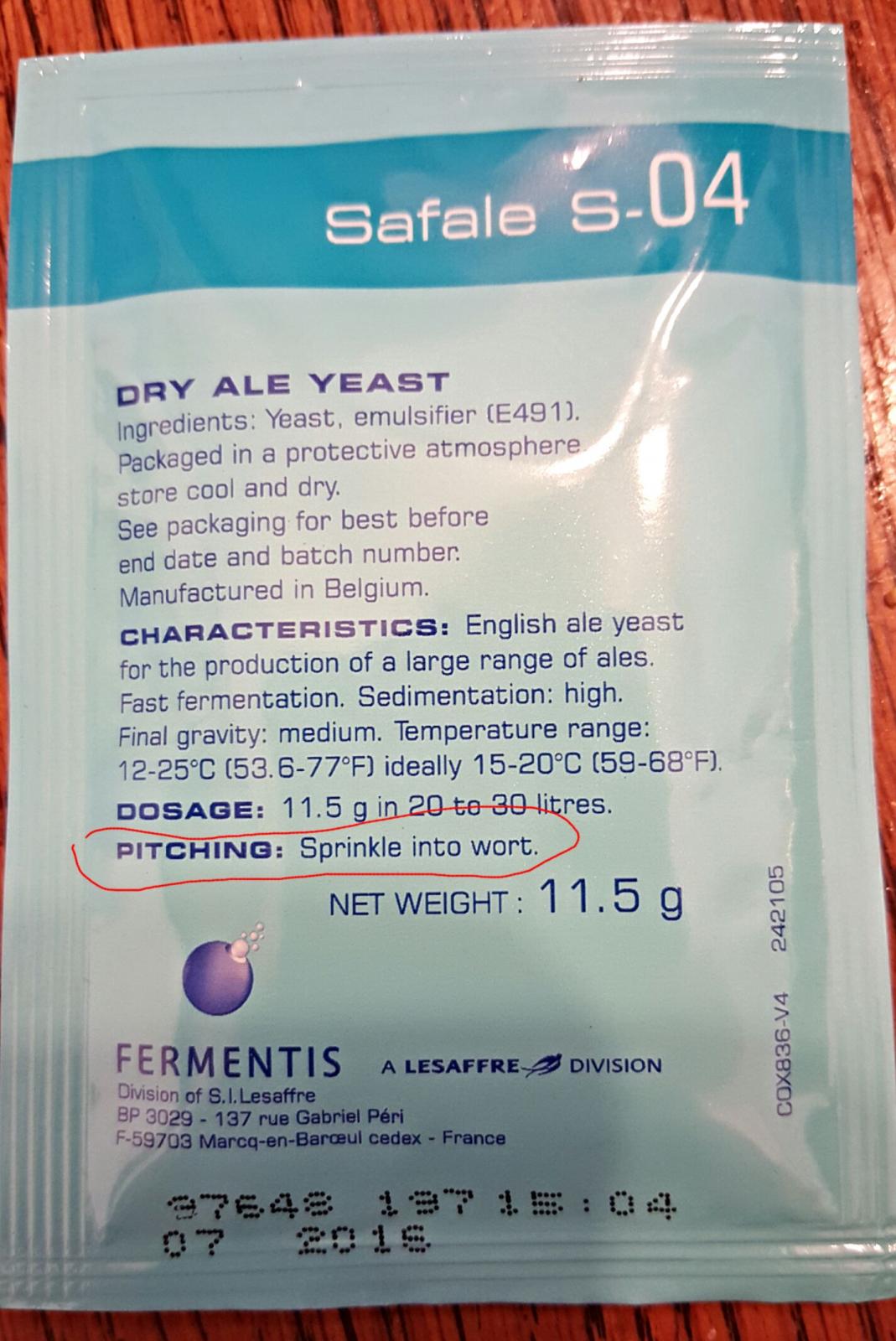BBR/BYO, Brulosopher and others have done experiments on rehydrating and haven't found sprinkling to have the dire consequences the "scientists" predict. So who should we trust? The scientist who studies yeast for a living or the people who brew home-brew scale batches and taste it? I have a microscope and its fun to look at yeast and show the kids but I generally decide if a beer is good or not by tasting. Should you rehydrate US-05? Yes if you want. If you do it right you might get slightly better results. If you don't want to then don't as it probably won't matter much - you are probably just brewing an ipa anyways and the subtle differences between rehydrate vs sprinkle will probably be lost behind a wall of hops. If you are using 34/70 and brewing a helles that depends on immaculate fermentation you probably should pay some attention to the the guys who sell yeast for a living and rehydrate.
Ok, since you won't start quoting two random experiments, I'll address them:
As far as the brulosopher experiment: It's hard to say how much that one means in particular. He himself could pick out the difference each time he was served both blindly. But also that experiment was early on, and he's since bettered his methods of presenting the experiments. He even points out a quote from Danstar at the beginning of the article that talks about if you want to get the optimum results out of your yeast, they need to be rehydrated. That's key for me. I'm not out there to make average beer for myself. Sure if you want to do that, feel free, but don't go shouting it from the rooftops that it's unnecessary just because you produce beer that you like. Just because you like something doesn't mean it's the best it could be.
Another aside, on it's yeast usage recommendations, Danstar recommends rehydration. And unlike fermentis, doesn't even say that you could just sprinkle dry as an alternative option.
As far as the dutch guy's experiment, looking at each of his "experiments":
1) He looks at attenuation of beers that were rehydrated vs. not. BUT these beers that he got this data from are likely all kinds of styles! 274 beers, and he thinks that rehydrated vs. dry pitch is the only thing that's going to affect attenuation? Give me a break.
2) Every dry yeast manufacturer's recommendation is that the liquid volume should be 10 times the weight of the amount of yeast you're using. In his rehydration, he used 33 times the weight... So already he's ignoring the labs' instructions.
Also, they all recommend stepping the temperature down with already-cooled wort, not letting ambient air temps bring it down. Which is what he did. They recommend not doing it this way because it can reduce viability and vitality (Danstar's own words there.)
Also, his method of testing cell viability (methylene blue staining) is often looked down upon in the yeast labs world.
Then after he let them all reach FG, the dry-pitched performed the worst in terms of the degree of apparent attenuation.
3) Again, he ignored fermentis' instructions which are, "Leave to rest 15 to 30 minutes. Gently stir for 30 minutes, and pitch the resultant cream into the fermentation vessel."
His "sensory evaluation panel" seems highly suspect. What does "5 experienced tasters" mean? Not to mention his descriptions of the final product don't give quality descriptors. "The beers tasted good." "The beer with no hydrated yeast appeared to be sweeter."
4) Interstingly, Nottingham performed the same, as pertaining to AA%, yet US-05 (the one being discussed in this thread) performed better after being rehydrated.
Now if you want to take his own tastings at bottling time as something significant (which I don't, but apparently you take this article seriously), then Nottingham and US-05 both clearly had defects.
Again his tasting panel is quite suspect. And the way he administered the tastings is equally highly suspect. Who knows if they were even blind to the nature of the experiment? Plus they knew there was an experiment. If I served you two beers and suggested that you should find the difference between the two, yet they were the exact same beer, my guess is you would work hard to pick out differences in them... only because I told you to do so.
The biggest thing he measures in these experiments is degree of apparent attenuation. Which is ridiculous. Maybe back in 2011 people that it would affect that %, but nobody I've seen has been arguing that. They argue, rather, that with up to half the amount of yeast needed for fermentation, you will increase cell growth significantly, which will significantly increase ester production (that fruity flavor your dutchman mentioned). Not to mention that often times the people who aren't rehydrating the yeast are new brewers, and are likely compounding mistakes on top of that (i.e. fermentation temps, aeration, pitch rate). I agree with those that say that new brewers should then just buy two packets and pitch dry in order to avoid more opportunities for infection, but that's not what is often advocated by the "pitch dry-ers." It's often 1 packet being discussed and that they "make perfectly good beer."
You're taking two very small data points, and making a final conclusion out of it. And those two very small data points have several things wrong with the way they were administered.




![Craft A Brew - Safale S-04 Dry Yeast - Fermentis - English Ale Dry Yeast - For English and American Ales and Hard Apple Ciders - Ingredients for Home Brewing - Beer Making Supplies - [1 Pack]](https://m.media-amazon.com/images/I/41fVGNh6JfL._SL500_.jpg)





















































